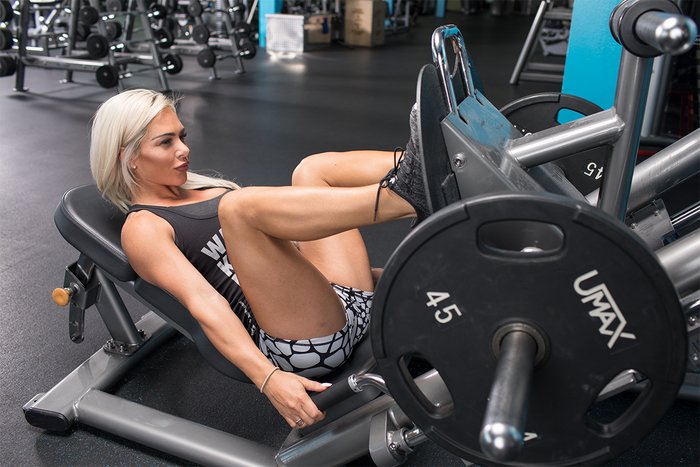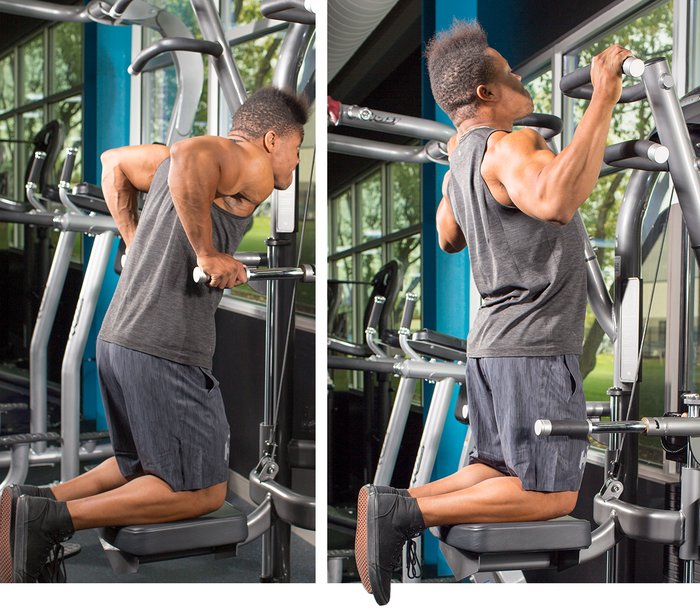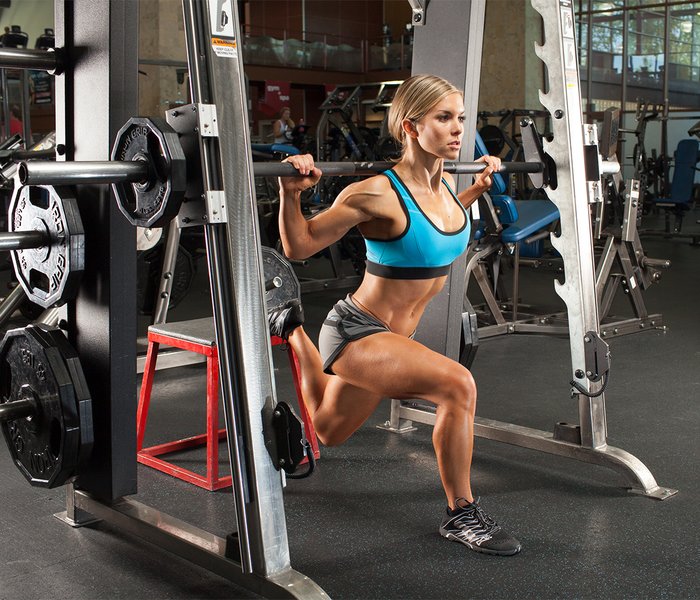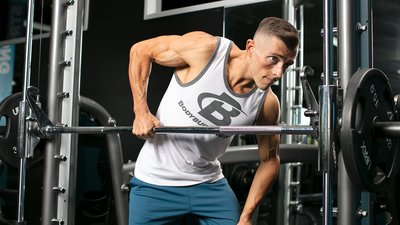Machines have suffered a pretty bad rap in the last few years, but they have a lot to offer. I'm not telling you to give up your beloved free weights; I'm merely suggesting that if other tools are available, you should at least give them some serious consideration. Want to get ripped? Build muscle? Train for a Spartan? Improve for CrossFit? A little strategic machine time can help with every one of those goals.
Here are three machines to put back into your routine so you can get ripped and see the results for yourself.
Lower Body: Leg Press
The largest and most powerful muscles in the body are in the legs, and compound movements are a great way to build those muscles. Yes, squats and deadlifts can build you a massive quad sweep and enviable hammies, but those moves pale in comparison to what the leg press has to offer.
The leg press is a great compound movement built into a machine, allowing you to train your legs effectively and safely after you've squatted, deadlifted, or both. Since your spine is kept stable throughout the exercise (your form notwithstanding), you can safely push a lot of weight and even work through injuries by properly using this versatile machine. It can even help you put up bigger numbers on your free lifts.

If you think the leg press is just for quads, you're sadly mistaken. Feet in the middle of the sled and shoulder-width apart targets the fronts of the thighs, but placing your feet close together at the top of the sled will engage your hamstrings so they can get in on the action. Slide your feet down to the bottom, heels hanging off the edge and—boom!—now you can turn those calves into cows.
Pro Tip: Perform 3-4 trisets of the leg press with your feet in all three positions for 15 reps each. It's a killer finisher on any leg day.
Upper Body: Pull-up/Dip Assist
Pull-ups and dips are two exercises that don't need me to sell them. They're about as solid an upper-body pairing as you can find. The only problem: People often get stuck at certain rep counts for weeks or even years on end. When this happens, you have choices beyond simply crashing into muscle failure over and over again!
The assist machine can help you crank out more volume on both your pull-up and your dip, pumping more blood into your muscles and burning more calories while you train. An extra bonus? If you're not yet strong enough to complete a clean set with momentum or crappy form, this machine can act as a spotter/tutor to help you improve. It may not be enough on its own, but it can definitely help!

And when you do finally outgrow those training wheels, just pull the pin and weigh the pad down with a plate and you've got a sturdy pull-up/dip station you can still use to your heart's content. What's not to like about that?
Pro Tip: Perform as many pull-ups as you can until you reach failure. Increase the weight the assistance provides so you can knock out a few more. This is basically a dropset to maximize pump and muscle burnout. Switch immediately to dips and do the same. Three rounds with a minute of rest between each will result in an awesome upper-body superset.
Total Body: Smith Machine
A lot of lifters knock the Smith machine, but it really doesn't get the credit it deserves. The Smith Machine is versatile because you can perform almost any barbell movement using the fixed motion that machines provide—which is particularly beneficial if you're fine-tuning your form or recovering from an injury.
Substitute the Smith version of various barbell exercises if you lack the proper technique, or use it on lifts that aggravate your injuries. This truly all-in-one machine can be used for upper-body movements like presses and bent-over rows, or lower-body movements like squats, stiff-legged deadlifts, and lunges. And if you've been struggling to get the right muscles firing, using the fixed-motion Smith to slow down and establish that all-important mind/muscle connection can do wonders for your big lifts.

Another advantage to the Smith machine is that you don't always need a spotter—though it is still sometimes a good idea. Once you reach failure, all you have to do is turn the bar so the hooks catch and you're safe. That means you can still get a safe, heavy workout even if you're flying solo.
Pro Tip: Take a week—maybe one after a hard week where you hit a big PR or peaked in workload—and replace the barbell exercises in your plan for the Smith versions. Focus on muscle contraction and rep speed. Really slow down the negative! This can provide some relief for your joints after the wear and tear of free-weight work and provide valuable insights into how you might improve your form.


